By: Richard Holdener (Onthedyno.com)
Back in part 1 we introduced Bangshifters to our Cool G 383 build up. What started out as a simple, iron-block 5.3L was quickly transformed into a 383 stroker by combining a forged steel crank (4.0-inch stroke) and 6.125-inch rods from Procomp Electronics with a set of JE forged, flat-top pistons. To that short block we added a Crane hydraulic roller cam that offered .624 lift, a 232/240-degree duration split and 113-degree lsa. We then topped off the stout short block with a set of CNC-ported TFS Gen X 225 heads and a Holley Mid Ram induction system. The unique intake system could be run a number of different ways but we chose the single throttle-body/EFI route. Back in part 1 we assembled the motor using ARP head studs and Fel Pro MLS head gaskets then ran the normally aspirated combo using a Holley Dominator EFI system. Taking the ever-foolish, more-is-better approach, we decided on a lofty goal of no less than 1,000 hp (a Cool G). In normally aspirated trim, the 383 produced 517 hp and 483 lb-ft of torque on the SuperFlow 902 at Westech Performance Group, getting us more than half way there.
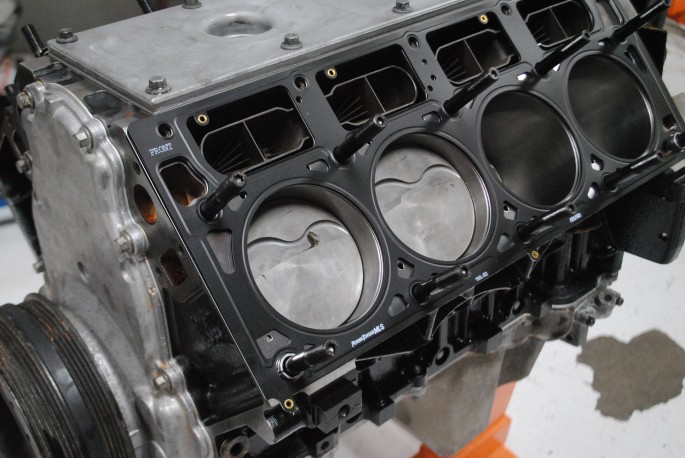
In preparation for boost, the 5.3L stroker received a forged 4.0-inch stroker crank from Procomp Electronics, 6.125-inch rods from K1 and forged, flat-top pistons from JE. Note also the Fel Pro MLS head gaskets and ARP head studs.

Helping us make power was a Crane hydraulic roller cam that offered .624 lift, a 232/240-degree duration split and 113-degree lsa.
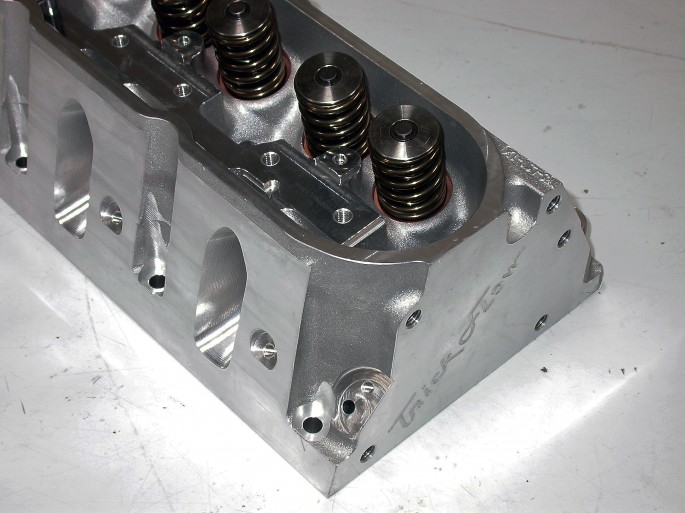
The Trick Flow Gen X 225 heads featured revised valve angles, full CNC porting and plenty of spring pressure for our turbo motor.

Though able to run as a dual-quad with carbs or EFI, we chose to equip the Holley Mid Ram with a single throttle body.
IF YOU MISSED PART 1, CLICK HERE TO READ IT FIRST
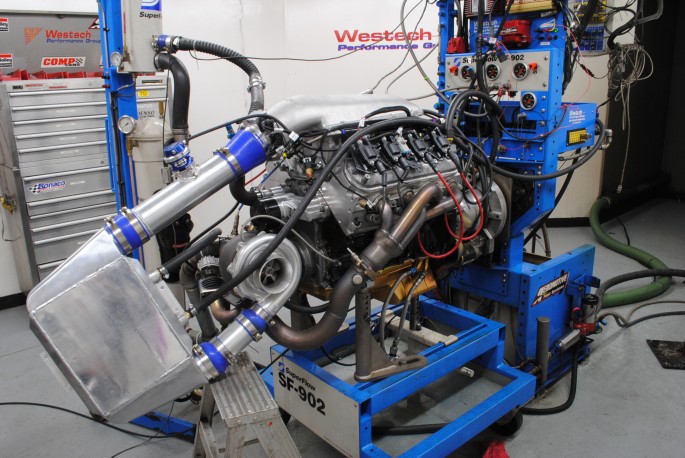
What is better than a normally aspirated 383 stroker that makes over 500 hp? A turbo one that makes twice that!
Obviously we were never going to reach 1,000 horsepower with a normally aspirated 383 stroker, so we introduced a little positive pressure. The single turbo kit was supplied by CXRacing.com. Designed for an LS-powered F-body (97-02), the kit from CXRacing.com might also be employed in swap applications due to its front-mount turbo position (typical on LS applications). CXRacing is also working on dedicated LS swap kits for popular muscle cars. The stainless kit featured dedicated exhaust manifolds, a y-pipe with T4 turbo and integrated waste gate flanges. The kit also included a waste gate, blow off valve and 76-mm turbo, capable of supporting over 700 hp. Optional on the kit was a massive front-mounted, air-to-air intercooler, complete with all the necessary (polished) aluminum tubing, couplers and clamps. The aluminum tubing even featured beaded ends to improve sealing. For the dyno, we chose to go the air-to-water intercooler route, selecting from one of many available from CXRacing.com. The intercooler featured 3.5-inch inlet and outlets, but CXRacing offered the necessary silicone adapters and tubing to mate the 2.5-inch discharge tube on the turbo to the intercooler.
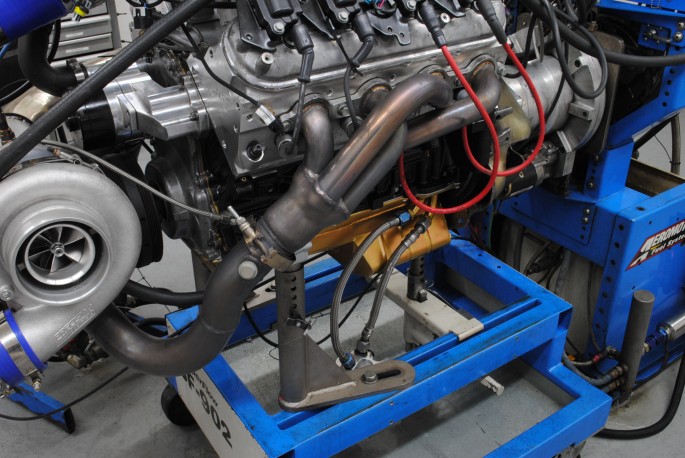
We replaced the headers with dedicated exhaust manifolds from CXRacing. The single-turbo kit was designed to fit an F-body application but we may check fitment in a swap application. The exhaust manifolds fed a Y-pipe that mounted the single T4 turbo.
Since we knew the 76-mm turbo offered by CXRacing would not get us to 1,000 hp, we devised a pair of back–up plans in the form of their new GT45-style turbo and an even more powerful 76-mm unit from Precision Turbo. The GT-45-style turbo from CXRacing was a significant step up from their standard 76-mm. As it turned out, the waste gate supplied with the turbo kit was unable to control the boost offered by the Precision turbo, but we came up with a simple solution using a fixed exhaust leak (we removed one of the oxygen sensor plugs before the turbo). Working like an open waste gate, this minimized boost build up in the lower rev ranges but allowed the turbo combination to build pressure with engine speed. The result was a rising boost curve that netted us a peak pressure of just over 16 psi. In preparation for turbo testing, we hooked up the intercooler, added race fuel and installed 65-pound injectors. After securing the various vacuum/boost lines to the waste gate, blow-off valve and fuel pressure regulator, we were off and running.
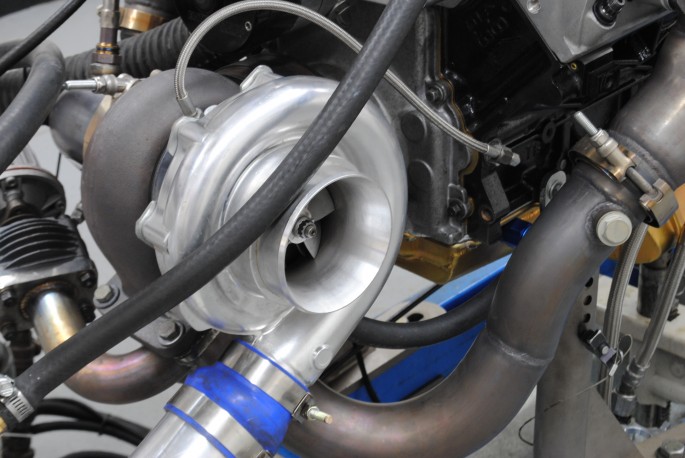
The kit was designed to accept a T4 turbo and CXRacing supplied one of their 76-mm turbos for our test. Before the day was done, we would test two larger turbos on this 383 stroker as well.
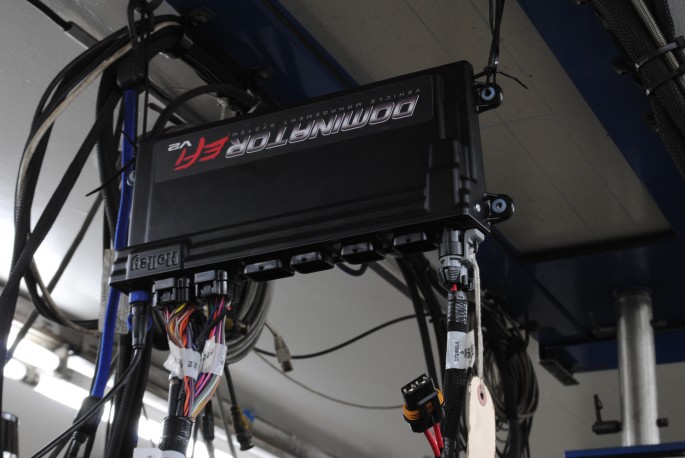
Tuning is critical on a high-boost turbo application so we selected a Holley Dominator EFI system. Holley also supplied the necessary 65-pound injectors.
With three turbos to test and a finite amount of dyno time, our turbo testing was limited. First up was the 76-mm turbo from CXRacing. Equipped with the smallest of the three turbos, the 383 produced 655 hp and 632 lb-ft at just over 8 psi. We know there was more power to be had from the small turbo but we knew the small turbo would not get us our Cool G and, we (naturally) were excited about going big.
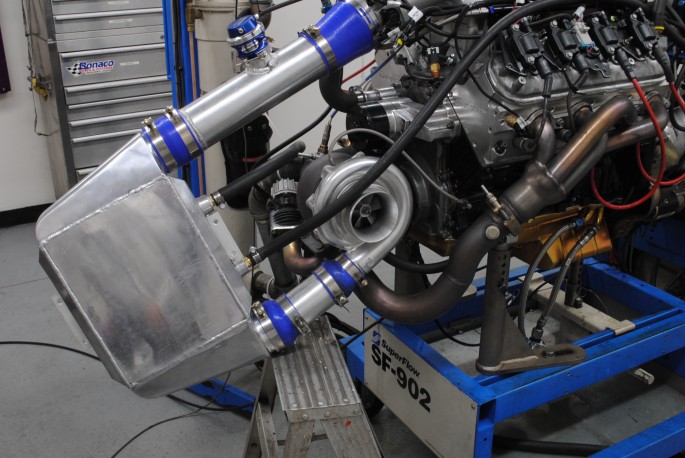
Equipped with the 76-mm turbo from CXRacing, the turbo 383 produced 655 hp and 632 lb-ft at just over 8 psi. We have exceeded 740 hp with this turbo at higher boost but were anxious to test the next turbo. An air-to-air intercooler was optional on the single turbo kit, but we elected to run this air-to-water unit using dyno water.
We installed the GT45-style turbo next with excellent results. The bigger turbo elevated the boost pressure significantly and peak power right along with it. With the boost gauge registering 14 psi, the peak numbers now stood at 882 hp and 836 lb-ft of torque. Again, there was (at least a little) more to be had from the GT45-style turbo but our money was on the massive 76-mm from Precision Turbo.
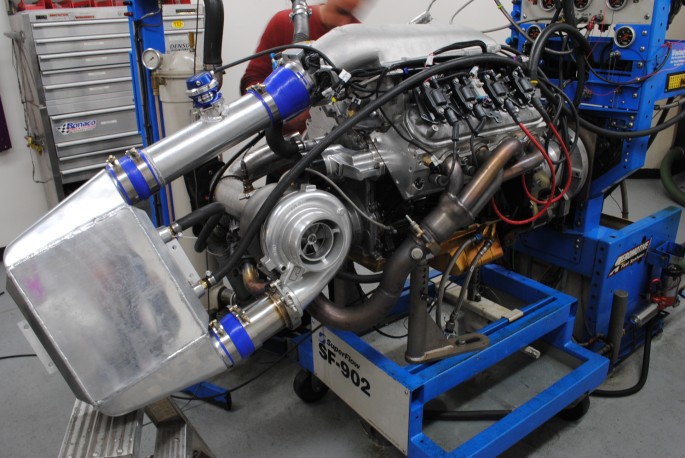
Next up was a larger GT45-style turbo from CXRacing. The largest turbo they offer, this new unit offered plenty of power and required a larger (3.5-inch) exhaust system.
Equipped with the GT45-style turbo, the turbo 383 produced 882 hp and 836 lb-ft of torque at 14 psi of boost.
Having already exceeded 1,000 hp a number of times in the past with this turbo, we knew it was the hot set up for our Cool G project. After removing one of the oxygen sensor plugs (before the turbo) to limit boost pressure, we were rewarded with a rising boost curve that peaked at 16.4 psi where the Cool G 383 pumped out 1,015 hp at 6300 rpm.
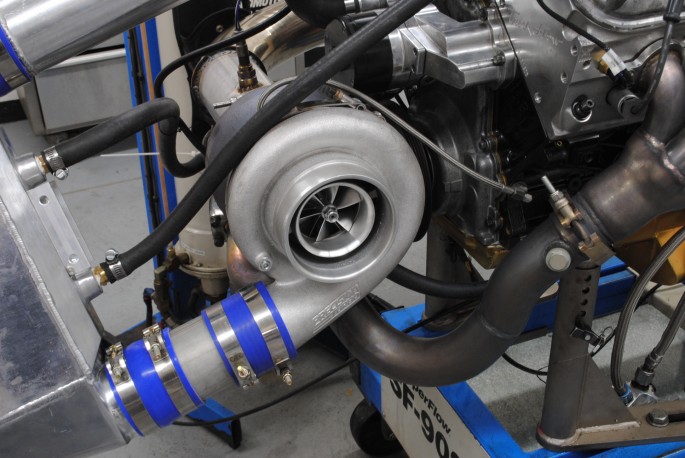
The final turbo of the night was this massive 76-mm race turbo from Precision. Though labeled as a 76-mm turbo, testing would show it had considerably more power available than the 76-mm (or GT45) unit from CXRacing.
Now that we had more power than we could use, it was time to stick it in a car and see just what it feels like to BangShift 1,000 horsepower.
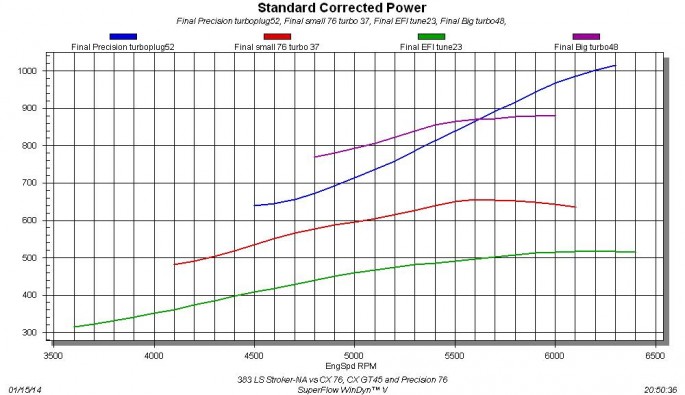
Equipped with the Precision turbo, we finally reached our goal of 1,000 hp with a peak number of 1,015 hp at 6,300 rpm and a peak boost of 16.4 psi. The rising boost curve and the fact that the provided waste gate could not control the boost supplied by the Precision turbo was a clear indication that there was plenty more power available from this unit.
Big thanks to all the companies involved in this build, and to Steve Brule’ and the staff at Westech Peformance Group for their help and support.
Sources:
Aeromotive
(913) 647-7300
Aeromotiveinc.com
Crane Cams
866-388-5120
www.cranecams.com
CXRacing
CXRacing.com
(626) 575-3288
FAST
(877) 334-8355
www.fuelairspark.com
JE Pistons
714-898-9763
www.jepistons.com
Holley/Hooker
270 782-2900
www.holley.com
Lucas Oil
Lucasoil.com
Milodon
805 577-5950
www.milodon.com
MSD
915 857-5200
MSDPerformance.com
Precision Turbo
219 996-7832
Precisionturbo.net
ProComp Electronics
(909) 605-1123
procompelectronics.com
Trick Flow Specialties
(330) 630-1555
trickflow.com













somebody is gonna have traction issues… I like the curve on the 880 hp turbo, but the big precision deal may be easier to launch? Is the 1k line really representative of the midrange with the introduction of the intentional exhaust leak, or would it be different with a big enough wastegate to actually control boost?
Cannot wait to see it in the car.
Neal, I’m having a hard time waiting too!
Way cool. I was suprised at the injector size, what was the peak duty cycle and fuel pressure set at?
I wouldn’t worry about the “curve” or “launching” because in the car, the boost/hp curves are going to be totally different.
Looking forward to tuning this in its final home.
Any chance we can get the turbine sizes?
Nice build! Do you have a pricelist for the motor?
Been a good season for turbo LS motors at Westech.
http://www.carcraft.com/techarticles/1401_msd_atomic_turbo_ls_test/photo_22.html